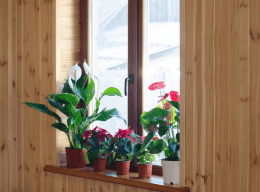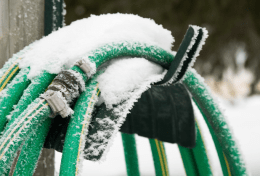House plants may look a little sad when you bring them inside for the winter and they may even shed a few leaves. Most of this is the plant responding to low light levels. Not only is the day length shorter, but the angle of the sun means sunlight must travel through more atmosphere before it reaches us in the northern latitudes. Each of these factors means less light energy reaches our house plants. House plants respond to this stress by stopping growth and dropping leaves if necessary. So how can we tell if leaves are being dropped due to stress or due to other factors? Normally, stress is the culprit if leaves are dropped throughout the plant and general thinning occurs.

The next question is what do we do about it? Well, you can add supplemental lighting or just wait until longer days and higher light levels allow the plants to recover. Unfortunately, people often decide the plant needs more fertilizer or water to perk it up. Remember the problem is low light, not a lack of fertilizer or water. Adding extra fertilizer or water won’t help, and may actually harm, the plant. If there is plenty of sunlight, the plant can use more water and fertilizer. Under low light levels, the plant doesn’t require much fertilizer and the nutrients stay in the soil where they can build up and may eventually burn roots.
Also, excess water can drown roots. Therefore, it is important to do a good job of watering and fertilizing during the winter. Only water when the soil is dry ½ inch deep in the pot. Eventually you can learn to judge whether a plant needs water just by weight. Also, reduce or eliminate fertilizing during the winter months. If the plant still looks thin in the spring, cut it back so it can put out new, thicker growth. Also, knock the plant out of the pot in the spring and make sure it isn’t root bound. If it is, move it up to a larger pot.
By: Cassie Thiessen
 By: Cassie Thiessen
By: Cassie Thiessen


 If you want beautiful, colorful tulips in the spring, now is the time to plant the bulbs! Spring flowering bulbs are often one of the first signs of spring in the landscape and a wonderful addition to any flower bed.
If you want beautiful, colorful tulips in the spring, now is the time to plant the bulbs! Spring flowering bulbs are often one of the first signs of spring in the landscape and a wonderful addition to any flower bed.